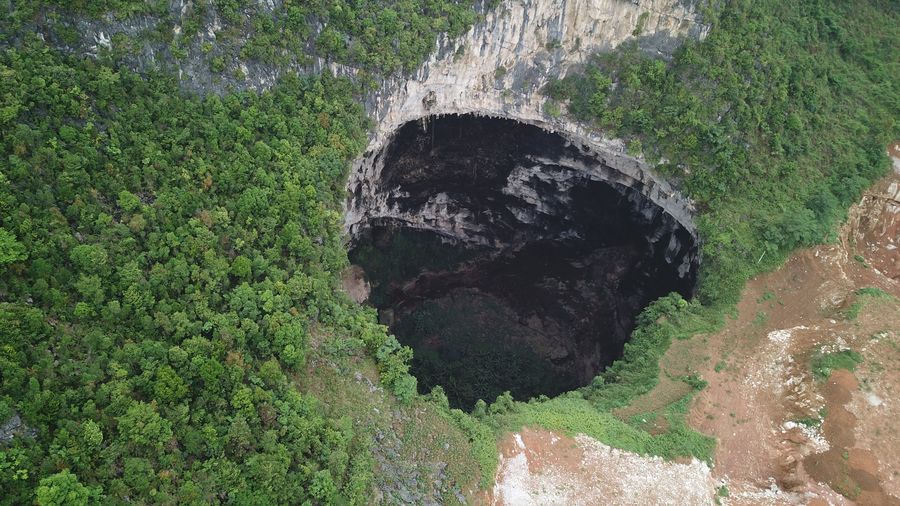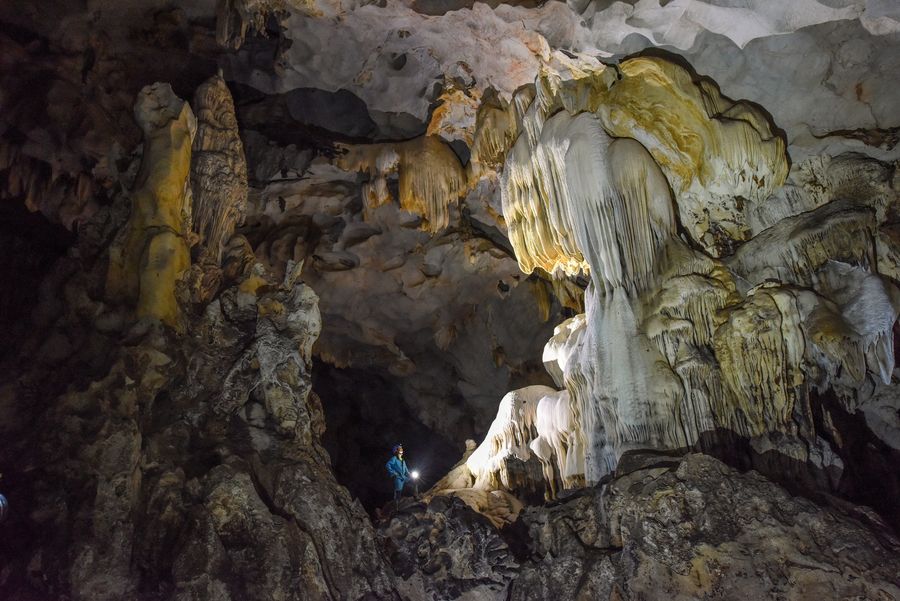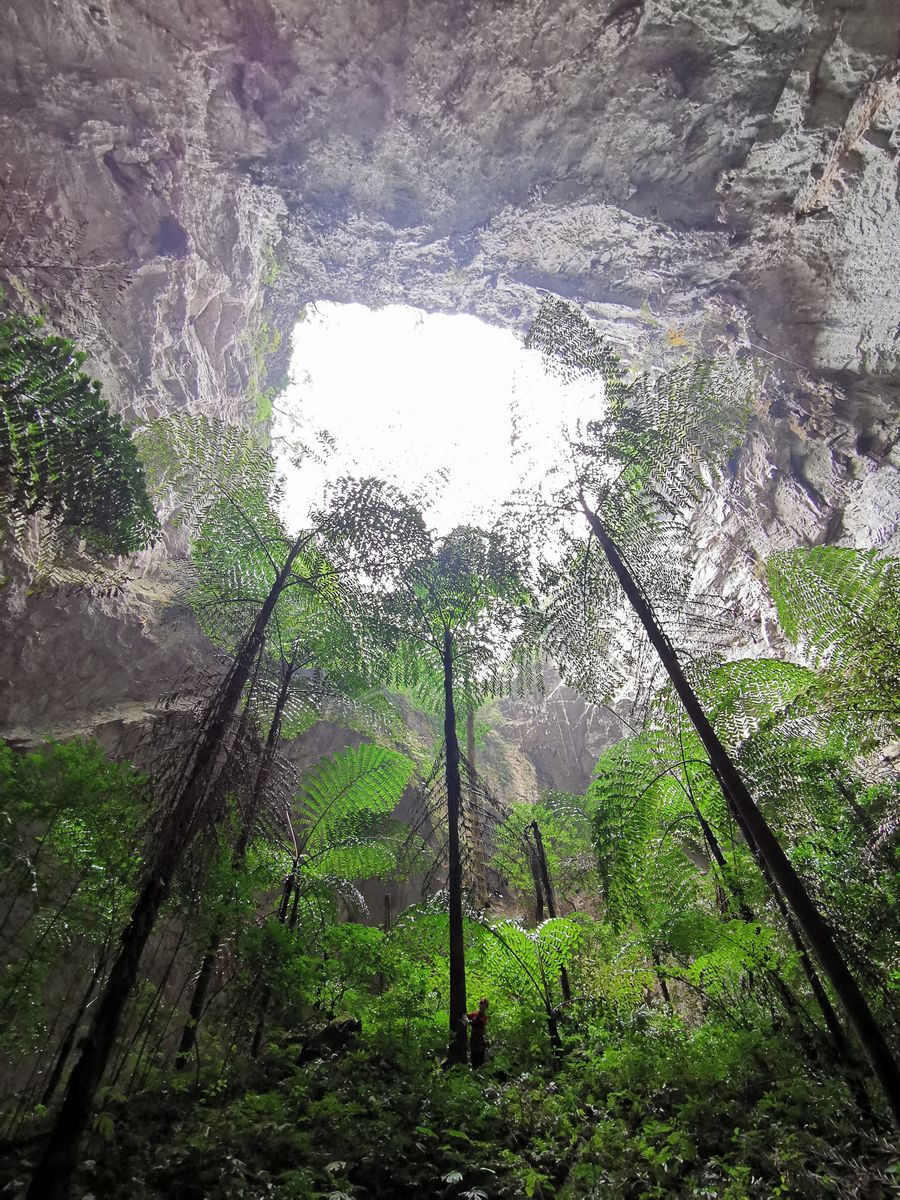
Aerial photo taken on Nov. 16, 2019 shows a newly discovered giant karst sinkhole in Napo County in south China's Guangxi Zhuang Autonomous Region. (Photo provided to Xinhua)
A team of multinational scientists have discovered a giant cluster of 19 karst sinkholes in south China's Guangxi. The sinkholes are interconnected through an underground river and a cave system.
NANNING, Nov. 19 (Xinhua) -- A team of multinational scientists said they have discovered a giant cluster of karst sinkholes in south China's Guangxi Zhuang Autonomous Region.
The sinkhole cluster, which consists of 19 karst sinkholes, is mainly located in Napo County, according to the scientists from China, the U.K. and France.
The sinkholes are interconnected through an underground river and a cave system, making them the largest cluster ever found south of the Tropic of Cancer, said Zhang Yuanhai, a member of the team organized by the Institute of Karst Geology of China Geological Survey, the Ministry of Natural Resources.
"Some of the sinkholes are formed at a plateau 1,000 meters above sea level, and the others as a chain developed along underground rivers. The founding will be of significance for the theory of sinkholes evolution," said Jiang Zhongcheng, head of the institute.

Photo taken on Nov. 16, 2019 shows an expedition team watching karst caves inside a sinkhole in Napo County, in south China's Guangxi Zhuang Autonomous Region. (Photo provided to Xinhua).
Most of the sinkholes boast a volume of over 1 million cubic meters, and their original vegetation is largely intact and the trace of human activities is scant, according to the team.
The giant sinkholes, also known as Tiankeng in China, are dolines, or giant pits, with special geological features found in karst regions formed by repeated cave-ins. They are mainly found in China, Mexico and Papua New Guinea.

Photo taken on Nov. 17, 2019 shows plants growing at the bottom of one karst sinkhole in Napo County, in south China's Guangxi Zhuang Autonomous Region. (Photo provided to Xinhua)
In 2001, geologist Zhu Xuewen proposed the Chinese name "Tiankeng" for dolines over 100 meters in depth, as there was no special term yet to define this unique geological feature. ■



